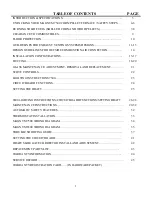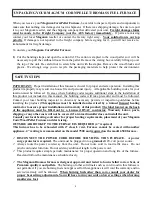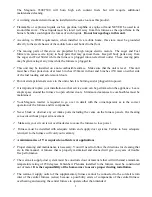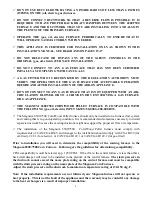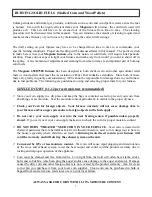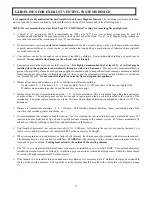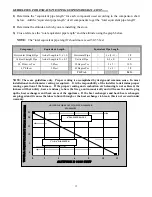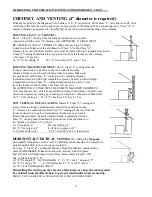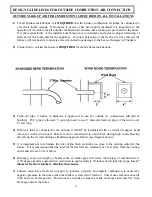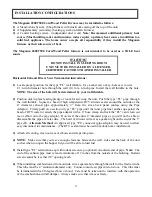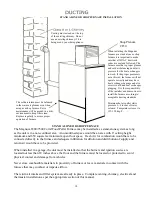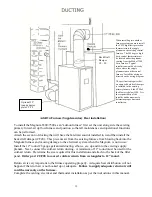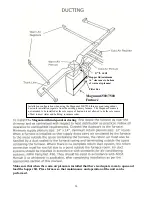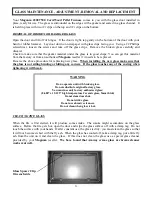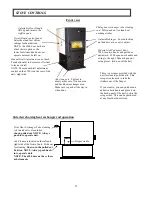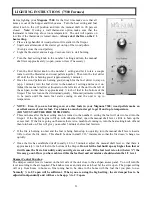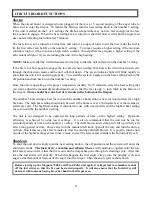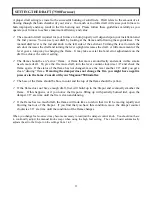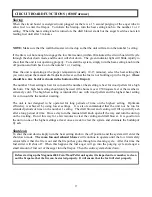
12
GUIDELINES FOR EXHAUST VENTING SYSTEMS DESIGN, CONT……
1)
Determine the “equivalent pipe length” for each component used according to the comparison chart
below. Add the “equivalent pipe length” of all components to get the “total equivalent pipe length”.
2)
Determine the altitude at which you are installing the stove.
3)
Cross-reference the “total equivalent pipe length” and the altitude using the graph below.
NOTE:
The “total equivalent pipe length” should not exceed 30-35 feet.
Component
Equivalent Length
Equivalent Pipe Length
Horizontal Straight Pipe
Actual Length in ft. x 1.0
Horizontal Pipe
=
1 x (2+1) =
3 ft.
Vertical Straight Pipe
Actual Length in ft. x 0.5
Vertical Pipe
=
0.5 x 8 =
4 ft.
90
0
Elbow or Tee
5.0 feet
90 Degree Tee
=
2 x 5 =
10 ft.
45
0
Elbow
3.0 feet
45 Degree Tee
=
1 x 3 =
3 ft.
TOTAL
=
20 ft.
NOTE: These are guidelines only. Proper venting is accomplished by design and common sense. In most
installations 4 inch diameter venting is required. It is the responsibility of the installer to determine proper
venting operation of the furnace. If the proper venting and combustion air balancing is not achieved, the
furnace will burn dirty, have a tendency to have the fire go out inconsistently and will cause the unit to plug
up the heat exchangers and back areas of the appliance. If the heat exchangers and back heat exchangers
are plugged and it causes the tubes to burn through or the heat exchanger to break, this is not covered under
warranty.
0 2 4 6 8 10 12
ALTITUDE X 1,000 FEET
25
20
15
10
5
0
4” DIAMETER ONLY
3” OR 4” DIAMETER
CRITERIA FOR SELECTING PIPE DIAMETER
MAXIMUM
0 2 4 6 8 10 12


